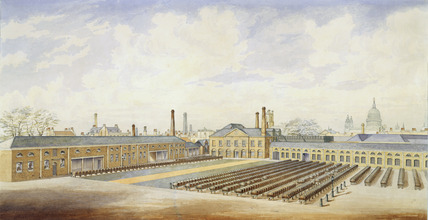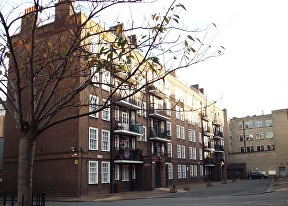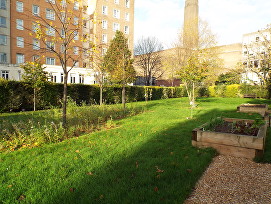





Exploring Southwark and discovering its history


Potts' Vinegar Yard
One of the largest businesses in London at the beginning of the 19th century was the vinegar yard in the Parish of St Saviours owned by the Pott family. It extended north as far as Park Street and beyond what is now Southwark Street to the south and west from Southwark Bridge as far as Great Guildford Street. The vinegar yard was described in 1795 by Concanen and Morgan in ‘The History and Antiquities of the Parish of St Saviour’s’.
“At the end of Castle Street** are the very extensive and improved premises, formerly of Mr Rush, now of Messrs. Robert, Arthur and William Pott, employed as a Vinegar Yard. We have an account of this place from so early a period as the year 1641, but long previous to which time was part of it was a gardener’s ground, and the remainder used for the keeping of hogs, and it was then considered a very great nuisance; this, however, must have been at a very early period, for in this year we find it first appropriated to its present purpose, by a Mr Rush, from whom the family and late possessors of that name are descended; in this family it remained a considerable and improving manufactory until the year 1790, when it came into the possession of the present proprietors, whose family had carried on a manufactory of the same nature in Mansel Street upwards of seventy years. The alterations made by these gentlemen can hardly come under the denomination of an improvement only, a total change having taken place by entire new erections and apparatus for the purposes of manufactory, which is now deemed to be the most extensive and most convenient of the kind in England. The dwelling house is the only part which seems to be remaining in its original state. The entrance from Castle Street, which was formerly but mean, being incumbered with low buildings, ill in repair, and worse inhabited, is now open and spacious. In the place of such houses as we have described, are two new dwellings, and the various buildings will, when compleat, form nearly a square, and cover between five and six acres of ground, raised many feet above its original level.”
**Castle Street is now called Thrale Street (after the one-time owner of the Barclay-Perkins Brewery and was considerably shortened to make way for the extension of the Charing Cross Railway from London Bridge and the building of Southwark Street.



Robert, Arthur and William Pott were the sons of Sir Perceval Pott, a prominent surgeon. Robert and Arthur played active roles in the management of the yard and both became prominent citizens and benefactors within the parish of St Saviour’s (Southwark Cathedral) and beyond. The vinegar yard was a part of the Winchester Estate which Robert and Arthur Pott held on a long – and complicated – lease from the Bishop of Winchester. When Robert and Arthur died, the business passed to Robert’s sons – Charles, Arthur and William, with Charles taking the lead.
As the area became more densely populated there was pressure on the factory site for both building and infrastructure and the vinegar yard gradually diminished. Part of the land was lost when Southwark Bridge and Southwark Bridge Road were built in 1819 and more when St Peter’s Church, daughter church of St Saviour’s (Southwark Cathedral) was built to the north to serve the expanding population in 1838. A new building for St Saviour’s Grammar School was built next door to the church at the same time, both buildings fronting south onto Sumner Street, a new road laid out from Southwark Bridge Road. The Pott family built on land to the north of the new road for commercial purposes. The yard was further reduced when the London Bridge to Charing Cross railway line was built and lost more land when Southwark Street was built to the south in 1864. More land was sold for the building of the Peabody Estate in Southwark Street at the same time. What Concanen and Morgan had described as extensive premises in 1795 were now much reduced.
The Pott vinegar distilling business was incorporated into Beaufoy & Co in Lambeth at the very beginning of the 20th century. The Corporation of London compulsorily purchased what remained of the former Pott’s vinegar yard site in 1911 to build homes for those displaced by the demolition of houses in preparation for the ill fated St Paul’s Bridge project. As there were delays to the building of the new bridge due to World War I and then prolonged discussion about the bridge after the war ended, the land remained vacant for some time. It was not until the bridge project was abandoned that the Corporation of London built four blocks that housed over 600 people in 1930 on an estate known as Sumner Buildings. Sadly today, nothing remains of either Pott’s vinegar distillery or the once popular brand.
Sumner Buildings and the Community Garden now standing on the site of the former vinegar yard owned by the Pott family